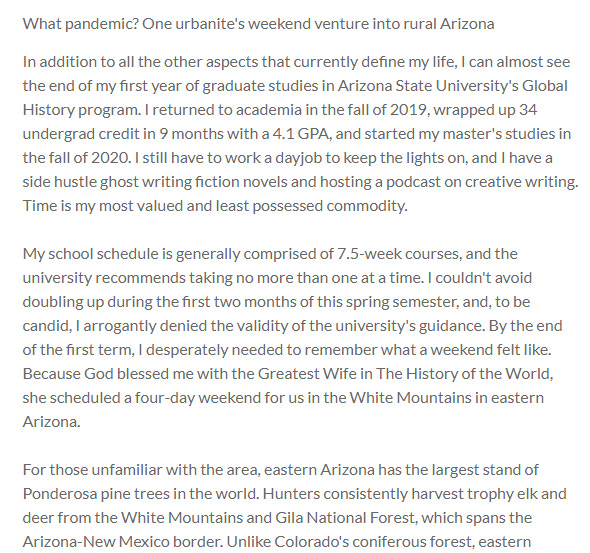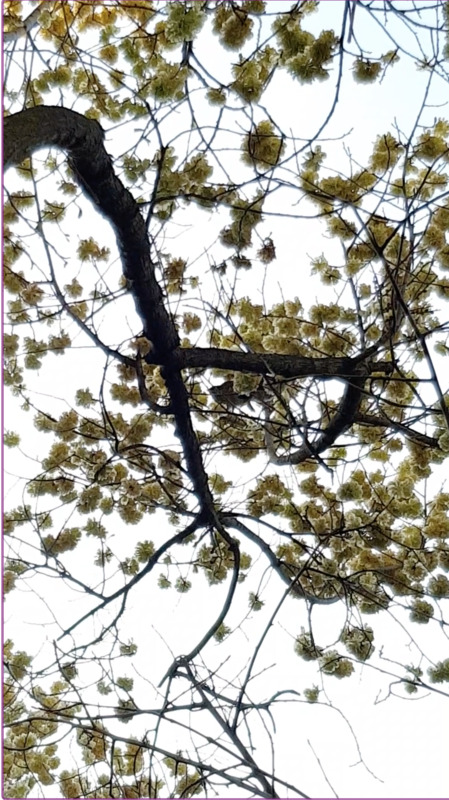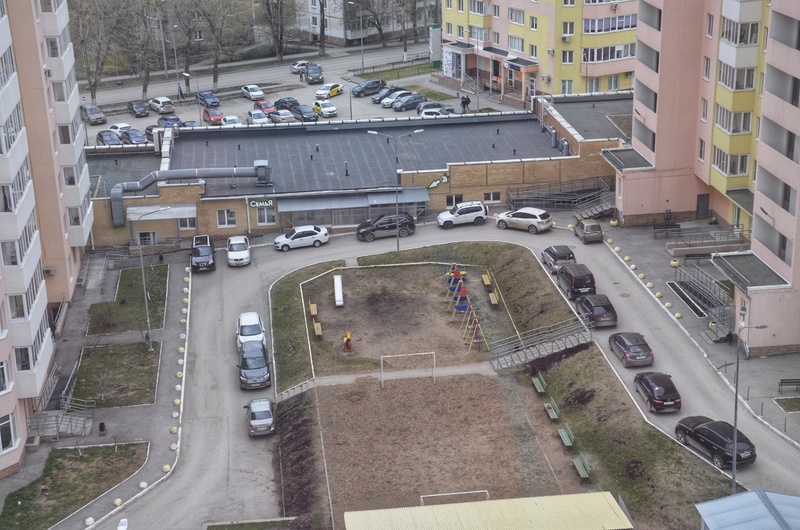Items
Tag is exactly
urban
-
 2021-04-20
2021-04-20Images and Audio from "Arizona's COVID-19 Pandemics" Exhibit
During March and April 2021, I created an online exhibit from content within Arizona State University's "A Journal of the Plague Year" COVID-19 archive. Entitled "Arizona's COVID-19 Pandemics," the digital exhibit contained images previously submitted to the archive, along with several copyright-free images I found on pexels.com. I have attached all these images. Listed by their order of appearance within the exhibit, their sources are as follows: 1- "Face It" Campaign flyer: Coconino County Health & Human Services ( https://covid-19archive.org/s/archive/item/42998 ) 2- Red Rocks, Sedona: Courtesy of Gregory Whitcoe via Pexels.com 3- Online Learning: Courtesy of August de Richelieu via Pexels.com 4- Tséhootsooí Medical Center staff: Courtesy of FDIHB Marketing Department and Navajo Times newspaper ( https://covid-19archive.org/s/archive/item/41189 ) 5- Arizona's Mask Mandate Map: created by Sarandon Raboin ( https://covid-19archive.org/s/archive/item/26267 ) 6- Arizona COVID-19 Infection Zip Code Map: Courtesy of Arizona Department of Health Services ( https://covid-19archive.org/s/archive/item/42035 ) 7- Woman Shopping: Courtesy of Anna Shvets via Pexels.com 8- Woman on Rural Arizona Road: Courtesy of Taryn Elliot via Pexels.com 9- Masked Woman in Crowd: Courtesy of Redrecords via Pexels.com 10- The Wave: Courtesy of Flickr via Pexels.com (this image is found only in the PDF submission of the exhibit, not in the public-facing exhibit itself due to document formatting technicalities - the PDF version can be found at https://covid-19archive.org/s/archive/item/42998 ) -
 2021-03-04
2021-03-04What pandemic? One urbanite's weekend venture into rural Arizona
In addition to all the other aspects that currently define my life, I can almost see the end of my first year of graduate studies in Arizona State University's Global History program. I returned to academia in the fall of 2019, wrapped up 34 undergrad credit in 9 months with a 4.1 GPA, and started my master's studies in the fall of 2020. I still have to work a dayjob to keep the lights on, and I have a side hustle ghost writing fiction novels and hosting a podcast on creative writing. Time is my most valued and least possessed commodity. My school schedule is generally comprised of 7.5-week courses, and the university recommends taking no more than one at a time. I couldn't avoid doubling up during the first two months of this spring semester, and, to be candid, I arrogantly denied the validity of the university's guidance. By the end of the first term, I desperately needed to remember what a weekend felt like. Because God blessed me with the Greatest Wife in The History of the World, she scheduled a four-day weekend for us in the White Mountains in eastern Arizona. For those unfamiliar with the area, eastern Arizona has the largest stand of Ponderosa pine trees in the world. Hunters consistently harvest trophy elk and deer from the White Mountains and Gila National Forest, which spans the Arizona-New Mexico border. Unlike Colorado's coniferous forest, eastern Arizona seems devoid of pine beetle kill. Nothing but healthy, evergreen forest and the scent of sun-warmed pine greets you. We stayed in a vacation home on the outskirts of Pinetop, brought our groceries from home, and largely intended on hiking, cooking, drinking, and doing a lot of nothing. When we arrived in Pinetop in early March 2021, I had already fully recovered from COVID-19 and had time for both of my Moderna vaccines to have taken full effect. My wife had neither protective barrier, but we had generally become comfortable with purpose-driven shopping (as opposed to "window shopping") and takeout dining. As such, we stopped into a bakery to get breakfast on the way out to the hiking trails as a vacation treat. To our surprise, many of the patrons weren't wearing masks while walking through the restaurant or waiting in line. That made us a little uncomfortable. Then, one of the employees walked out from the kitchen with no mask on and began working on filling orders at the front, cold-food storage counters. Both of us panicked a bit and considered cancelling our orders and leaving. My wife pulled up the Arizona Department of Health Services site and quickly found that entire county had endured only a little more than 560 cases. A quick bit of division translated that into an average of two infections per day for the entire pandemic year-to-date. The statistical odds of the unmasked clerk or patrons presenting a health risk to either of us fell to just north of zero. NOT zero, but we both felt we could see it from there. The ham, egg, and cheese croissants were delicious, by the way. In trying to be good guests, we continued to wear our masks whenever we ventured into public spaces and businesses. Less than half of those around did the same, and I didn't see or hear anyone confront each other about mask wearing. Our last venture out that weekend was to a beer garden with a prominent outdoor patio and seating area. We again wore our masks inside the establishment, but we immediately felt like outcasts for having done so. When we stepped inside, it looked as though the town villain had just stepped through the saloon doors: all activity inside the business stopped, and everyone seated inside turned around to look us up-and-down for few silent moments. If anyone had been playing piano, they would have switched to a minor key. NO ONE else inside wore a mask, and the interior tables didn't appear to have been spaced to comply with prevailing social distancing guidelines. Everyone stayed kind of quiet until we ordered beers and asked to sit outside. In hindsight, I wonder if they expected we were there from some government bureaucracy to issue citations, or just out-of-towners about to have a value-based hissy fit? I have been generally opposed to broad behavior mandates that typically justify compliance on urban problems, but that weekend compelled me to really consider the divergent pandemic realities Arizonans have endured for the past year. Further analysis of county-specific data seems to suggest at least four divergent pandemic experiences within Arizona: urban centers, border counties, rural counties, and Native American reservations. I hope to better understand the personal experiences of those who lived in these diverse regions and how the pandemic affected their perspective and reality. -
 2020-05-13
2020-05-13Real life Jumanji
This website explains how wildlife has changed since the pandemic occurred. They explain how it could be a real life jumanji situation and how pollution levels have decreased. -
 2020-05-28
2020-05-28Street Art - political critique and social engagement
This article, written by Jana Fedtke for PopMatters, describes instances of worldwide street art as political critique and social engagement during the pandemic. Examples of street art shown include stencil work. The author explores the ways in which street art relay information about how government agencies have handled spreading information and health care and in turn, how street artists depict social engagement with pandemic procedures. -
 2020-09-28
2020-09-28Noticing the little things
Like many people, I've been spending a lot more time in my back yard this year. Once the weather started getting nice enough our household and the neighbours all seemed to have the idea to start barbequing, just for something different to do, and we often had barbeques going in three back yards along at the same time. One such day I spotted two baby wattlebirds in the tree. I spent a good few hours that day, and the next few, just watching them and their parents feeding them, I even saw their first flight. It's something I never could have imagined spending so long doing before the pandemic, so I guess you could call that a positive of the experience. (HIST30060) -
2020
Economic Impact of COVID-19 on The United States
This image shows the different economic impacts of each state in comparison with one another. It is interesting that Alaska has been moderately affected and that Florida, New York and Washington state have the highest risk for exposure. This image shows that many middle states have had low exposure when it comes to the economy. -
 April 7, 2020
April 7, 2020LA Today
A drone shot taken above an abandoned Los Angeles. A sight no one ever thought they would see. Eerily post apocalyptic. -
 2020
2020Deserted street
Usually on Sunny days there are a lot of people walking here, but during the quarantine it is empty. -
2020-05-01
Missing Sounds of New York: An Auditory Love Letter to New Yorkers
Soundscape recordings of pre-Covid New York City life, from the New York Public Library -
 2020-03-23
2020-03-23Self-isolation desk
As an Australian who has just arrived back from overseas (Thailand) on 20 March 2020, I am required to self-isolate for 14 days. As I am sharing a small one-bedroom inner urban apartment. I need to stick to my own room, while my fellow inhabitant lives in the lounge room. I’m also a PhD student in the final throes of trying to get my thesis done and do various casual research jobs at two different universities. This is my makeshift desk set up at the side of the bed to enable me to hopefully get some work done throughout this uncertain period. I also have a tiny 1.5mx2m space set up on the other side of the bed to try to do some yoga during the isolation period.
